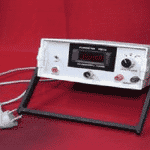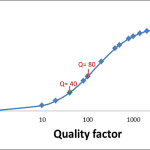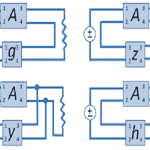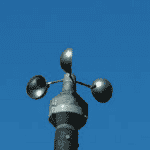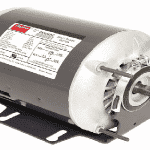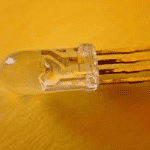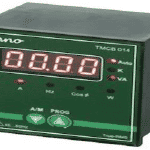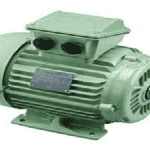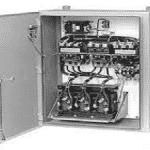In the field of physics, particularly in electromagnetism, the concept of magnetic flux across the surface is defined as the surface integral of the general factor of the magnetic field which is represented with ФB. In order to measure the magnetic flux, there has to be a device, and it is the flux meter. Even though the development of flux meters started many years back, the usage of these devices started a few decades back. Now, with the advancement, … [Read more...]
What is Transformer Efficiency : Derivation & Affected Factors
We all know that transformer is the most crucial device in many electrical and electronic domains. This is considered as the passive device where the main purpose is to transfer electrical energy from one circuit to another or to many circuits. These are mainly implemented for increasing or decreasing the voltage levels in many applications. As we can state that device performance is noted by its efficiency, similarly transformer performance is known by … [Read more...]
What is Feedback Amplifier : Types & Its Applications
In the domain of electronics, a feedback amplifier is a component that acts in response to minimal voltage, power, and current signals and gives the output as a larger signal which comprises the crucial waveform characteristics of the input wave. These amplifiers exist in multiple forms which are extensively implemented in many electronic devices like televisions, computers, radio, and audio equipment. The functionality of amplification can be offered … [Read more...]
What is Anemometer : Types, Working Principle & Its Uses
The development of the anemometer happened in the year 15th century. In the year 1450, Leon Alberti was the person who developed the initial mechanical kind of anemometer. Later on, in the next centuries, many others along with Robert Hooke invented their own styles where few of them were wrongly acclaimed as inventors. Whereas during the period 1846, John Romney enhanced the initial version of it using mechanical wheels and hemispherical cups. Then, a … [Read more...]
What is Split Phase Induction Motor : Working & Its Applications
The development of induction motors took place by a French scientist named Francois. He was the person who formulated the presence of revolving magnetic fields which are called Arago’s rotations and this happened in the year 1824. Whereas during the period 1879, Walter Bailey exhibited the same principle through manually switching ON and OFF which is successfully called the initial primitive induction motor. And the first single-phase AC type of induction … [Read more...]
What is RGB LED : Schematic Diagram & Its Types
An LED is considered as the semiconductor light resource which produces light when there is current flow through the device. The color of the emitted light is known by the amount of energy needed for the electrons to traverse through the semiconductor’s bandgap. Initial LEDs were employed as indicator lamps in the place of incandescent bulbs. Whereas the modern advancements in LED have emitted high-level output appropriate for lighting in external … [Read more...]
What is Power Analyzer : Circuit & Its Working
Electric power is now the mainstay of many technologies and applications. This is the term that is used to know the energy transferred by the electric circuit. Through the electric power industry, power will be supplied to households and businesses. There are multiple approaches to power generation and every application requires various levels of power. The generation of power is handled by the electric power industry. There might be the chances of getting … [Read more...]
What is a Permanent Magnet Synchronous Motor & Its Working
The creation of a synchronous motor took place in the year 1869 which was almost two decades back before the discovery of the induction motor. In the early stages of the 20th century, the development of induction motor happened, and its application was extensively developed. Whereas the reach of the synchronous motor was not more till the early period of the 1920s. Nearly, 5 years were needed to progress the necessary initial ability by interaction with … [Read more...]
What is Autotransformer Starter : Working & Its Uses
Initially, let us know what an autotransformer is, an autotransformer is the electric type of transformer that works only with one winding. The word “Auto” indicates that only one coil functions independently. Here, the sections that are present in the same winding operate as the transformer’s secondary and primary windings. Whereas, the general kind of transformer has individual secondary and primary windings. And then the invention of the autotransformer … [Read more...]
What is Centrifugal Switch : Functionality & Its Testing
In general, centrifugal switches are mainly used in single-phase and split-phase induction motors. The patent rights on this device were gained by Royal Lee during 1920. This stood as the foundation for the development of Lee Engineering Company. Before the development of centrifugal switches, the location of motors used to be inside the motor frame where it directed to the collection of a huge amount of grease, oil particles, dust which reduced the … [Read more...]
- « Previous Page
- 1
- …
- 7
- 8
- 9
- 10
- 11
- …
- 18
- Next Page »
